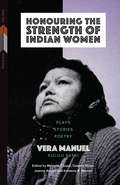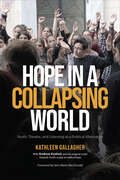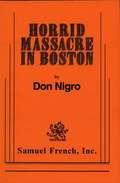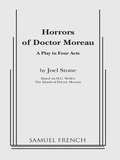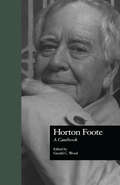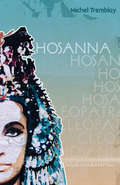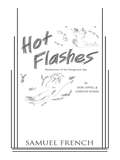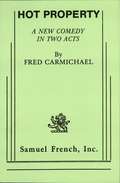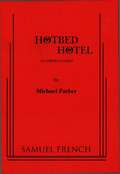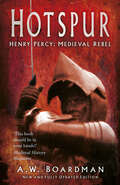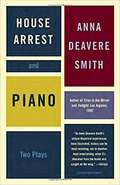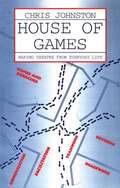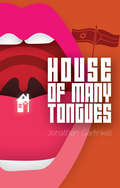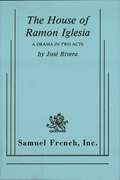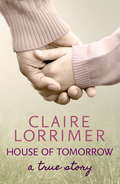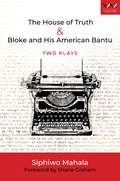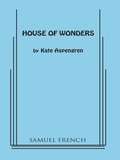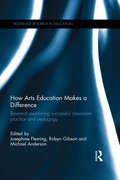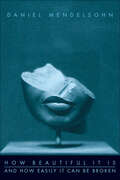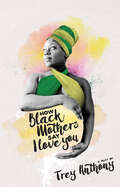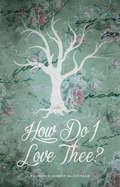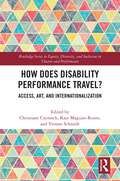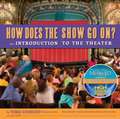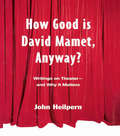- Table View
- List View
Honouring the Strength of Indian Women: Plays, Stories, Poetry (First Voices, First Texts #5)
by Vera ManuelThis critical edition delivers a unique and comprehensive collection of the works of Ktunaxa-Secwepemc writer and educator Vera Manuel, daughter of prominent Indigenous leaders Marceline Paul and George Manuel. A vibrant force in the burgeoning Indigenous theatre scene, Vera was at the forefront of residential school writing and did groundbreaking work as a dramatherapist and healer. Long before mainstream Canada understood and discussed the impact and devastating legacy of Canada’s Indian residential schools, Vera Manuel wrote about it as part of her personal and community healing. She became a grassroots leader addressing the need to bring to light the stories of survivors, their journeys of healing, and the therapeutic value of writing and performing arts. A collaboration by four Indigenous writers and scholars steeped in values of Indigenous ethics and editing practices, the volume features Manuel’s most famous play, "Strength of Indian Women"—first performed in 1992 and still one of the most important literary works to deal with the trauma of residential schools—along with an assemblage of plays, written between the late 1980s until Manuel’s untimely passing in 2010, that were performed but never before published. The volume also includes three previously unpublished short stories written in 1988, poetry written over three decades in a variety of venues, and a 1987 college essay that draws on family and community interviews on the effects of residential schools.
Hope in a Collapsing World: Youth, Theatre, and Listening as a Political Alternative
by Kathleen GallagherFor young people, the space of the drama classroom can be a space for deep learning as they struggle across difference to create something together with common purpose. Collaborating across institutions, theatres, and community spaces, the research in Hope in a Collapsing World mobilizes theatre to build its methodology and create new data with young people as they seek the language of performance to communicate their worries, fears, and dreams to a global network of researchers and a wider public. A collaboration between a social scientist and a playwright and using both ethnographic study and playwriting, Hope in a Collapsing World represents a groundbreaking hybrid format of research text and original script – titled Towards Youth: A Play on Radical Hope – for reading, experimentation, and performance.
Horrid Massacre in Boston
by Don NigroDark Dramatic Comedy / 4m, 4f / Interior / Jane Lamb, an orphan, finds a home at Mrs. Turley's Bunch of Grapes Inn in Boston during the Revolution. The colorful, eccentric and dangerous regulars she encounters there include a demonic roustabout who is a patriot, a traitor or a bit of both; Ophelia, a mad girl who talks to mice, and the Oyster Man, a street vendor obsessed with the Boston Massacre where he received a wound that has scrambled his brains to an alarming degree. Jane learns a vivid lesson about the dark underside of patriotic mythology in this nightmarish world of murder, secrets, betrayal and lunacy. This savagely funny, robust and haunting play is part of the author's series Pendragon Plays.
Horrors of Dr. Moreau
by Joel StoneComedy, Melodrama / 4m, 2f, plus an offstage voice / Exterior / Doctor Moreau is a scientist who is creating a race of "Beast people" -- creatures carved and shaped out of living animals, made to resemble and behave like human beings. They populate Moreau's secluded island, worshipping Moreau as their Creator God and obeying his Laws. The appearance of another "real" human being causes confusion, fear and suspicion amongst them, and they soon revert to their original animal traits and instincts! / "Brings the original H. G. Well's story to life more succinctly and literately than Paramount."-- The New York Times
Horton Foote: A Casebook (Casebooks on Modern Dramatists #24)
by Gerald C. WoodFirst Published in 1998. Routledge is an imprint of Taylor & Francis, an informa company.
Hosanna
by Michel Tremblay Bill Glassco John Van BurekIn Michel Tremblay's classic play about identity in crisis, Claude leaves the conformity of small-town Quebec to realize a new life and a new persona among the drag queens and prostitutes of Montreal's seedy "Main" - the boulevard that marks the division of the city's anglophone and francophone neighbourhoods.Claude's illusions about himself are shattered when, painstakingly remade as his idol Elizabeth Taylor inCleopatra, he arrives at a costume party themed on "great women of history" and is mocked for his glamorous aspirations. Written during the social and political tumult of Quebec's Quiet Revolution, Tremblay's political allegory about the authenticity of self resonates ever more so today.
Hosanna
by Michel TremblayThird Edition In Michel Tremblay's classic play about identity in crisis, Claude leaves the conformity of small-town Quebec to realize a new life and a new persona among the drag queens and prostitutes of Montreal's seedy "Main" - the boulevard that marks the division of the city's anglophone and francophone neighbourhoods. Claude's illusions about himself are shattered when, painstakingly remade as his idol Elizabeth Taylor in Cleopatra, he arrives at a costume party themed on "great women of history" and is mocked for his glamorous aspirations. Written during the social and political tumult of Quebec's Quiet Revolution, Tremblay's political allegory about the authenticity of self resonates ever more so today. Cast of 2 men. Translated by John Van Burek & Bill Glassco
Hot Flashes
by Dori AppelComedy \ Flexible casting, 2f - 20f \ Unit set \ What previously forbidden subject is now a hot topic for baby boomers and beyond? Hot Flashes is a fast-paced, highly original comedy about menopause which has been delighting audiences throughout the United States. A main stage hit at the 2004 Senior Theatre Festival in Las Vegas, its nine lively scenes also include a finalist in the Eileen Heckart Drama for Seniors competition and a slam poetry winner. Flexible casting possibilities allow from two to twenty actresses to perform nine scenes about the unique challenges and comic adventures of menopause. \ "Firmly on the pulse of local Baby Boomers . . .should appeal to men and women of all ages."- Ashland Daily Tidings, Ashland, Oregon
Hot Property
by Fred CarmichaelComedy / 4m, 4f / Interior / Laughter, mistaken identities,, and even a "sting" conspire to make this an irresistible comedy. Jamie's mother was an author and before she died she wrote the sensational and sensuous life history of INEZ which is fast becoming a best seller but crafty Spencer Layton got hold of the manuscript and had it published with him as author. Jamie and his fiance, Kay, are about to give up when Albertine Johnson, a character actress, appears fresh from a fire which canceled a week's engagement of her touring company. She and her fellow thespians assume other identities and act their hearts out to defeat Spencer. Albertine enters as the notorious Inez to persuade Spencer Inez is real and will sue him for slander. Another of the actors comes in as Inez's long lost daughter and another as the publisher of the book. When the real publisher shows up, the sting is getting out of hand but plot twists and the inventiveness of actors makes for a happily hilarious ending.
Hotbed Hotel
by Michael ParkerComedy / 4m, 5f / Unit Set / Terri and Brian Cody are trying to sell their one star (and often one guest) hotel in the Florida Keys. A prospective buyer is about to arrive from New York. They decide to have the staff masquerade as paying guests to convince the him that the establishment is busy and prosperous. Unfortunately, the staff consists of a bibulous maintenance man and a curvaceous but somewhat vacant young maid. Add the eccentric retired British Army Major who resides at the hotel, a wealthy Arab Sheik (who looks suspiciously like the Major), a nymphomaniac dubbed The Barracuda during her annual stays, the prospective buyer's girlfriend and, unexpectedly, his wife, and you have a laugh a minute merry go round that leaves audiences screaming with delight.
Hotspur: Henry Percy: Medieval Rebel
by Andrew Boardman‘This book should be in your hands!’ – Medieval History Magazine'A detailed and readable account of Hotspur’s life that conveys a sense of the endemic violence of the Border Marches.’ – Northern History‘Boardman has studied the battlefields of Otterburn, Homildon Hill and Shrewsbury and combines knowledge of terrain, weapons, and tactics with contemporary narratives to produce feasible reconstructions and explanations of what actually occurred.’ – Michael HicksImmortalised by Shakespeare in Henry IV, Part I, Henry Percy, nicknamed ‘Hotspur’, is among the best known of all his warlike characters.As the young, honourablebut impatient rebel soldier whose chivalrous exploits on the battlefield end in disaster at Shrewsbury in 1403, Hotspur is the archetypal anti-hero: a character of such tragic and dramatic significance that even his well-known nickname has passed from history into legend. But who was the historical Henry Percy, and why did his rise to fame bring him into direct confrontation with his king?This fully updated book tells the story of the real Henry Percy and his overbearing family, and how the survival of a great northern dynasty led to open rebellion and ultimately military failure.
House Arrest and Piano
by Anna Deavere SmithFrom the award-winning actor and playwright Anna Deavere Smith, two teeming, pungent cross-sections of the American experience. In the provocative and at times bitterly funny playHouse Arrest,Smith examines the relationships between a succession of American presidents and their observers in and out of the press. Arcing from Clinton and Monica Lewinsky to Jefferson and Sally Hemings and alive with the voices of such real-life figures as Ed Bradley, George Stephanopoulos, Anita Hill, and Abraham Lincoln, the result is a priceless examination of the intersection of public power and private life. InPiano,Smith casts her gaze back a century as she follows the tangled lines of race, sex, and exploitation in a prosperous Cuban household on the eve of the Spanish-American War. Deftly and suspensefully, Smith tells a story of ruptured allegiances and ramifying deceptions in which no one—master or servant, friend or enemy—is what he or she pretends to be. Together these two plays are further proof that Anna Deavere Smith is one of the most searing and revelatory voices in the American theater.
House of Games
by Chris JohnstonAn immensely valuable resource book for drama leaders, House of Games is a how-to book for building up drama troupes and keeping them creative. House of Games is sure to take its place alongside the most established drama method texts.
House of Many Tongues
by Jonathan GarfinkelDuring the Six Day War, an Israeli general found an abandoned house and made it his home. Forty years later, the general, along with his imaginative and distant son Alex, live in peaceful solitude. When a Palestinian writer shows up with is daughter and lays claim to the house he left decades ago, an internal house war ensues. The bathroom is seized, a fig tree is destroyed, and the basement becomes a shrine in the resulting chaos. Relenting, both men strike a deal to share the house. Somehow these two families are going to have to live together—if they don't kill each other first.
House of Ramon Iglesia
by Jose RiveraDrama / 5m, 2f / Interior / This probing drama by a very talented new Hispanic playwright was a co winner of a very prestigious national playwrighting contest sponsored by CBS, and was produced successfully in NYC by the excellent Ensemble Studio Theatre.
House of Tomorrow
by Claire LorrimerThis is the moving true story of Jeanette Roberts, a young London girl who survived appalling abuse in her own childhood, and so determined to give other children in the same position the love and care she had been denied. A chance meeting with a small boy she caught stealing led to a life-long commitment to a steady stream of disturbed, abused and handicapped children whom everyone else had turned away. By becoming their beloved 'Mum', Jeanette has been able to transform their lives, giving them the protection they so desperately need.
House of Truth & Bloke and His American Bantu: Two plays
by Siphiwo MahalaSiphiwo Mahala delves into the lives of iconic figures from South Africa's tumultuous past in this remarkable collection of plays. The collection opens with The House of Truth, which explores the complexity of Can Themba, a fearless journalist, playwright and poet living under an oppressive apartheid regime. The one-man play weaves together elements of Themba's life and career, recreating the excitement and pathos of the DRUM era South Africa's first magazine for a black audience, and his resident neighborhood, Sophiatown in Johannesburg, before it was destroyed by apartheid legislation. Themba is brought back to life as an ordinary person with human flaws and attributes both tragic and inspirational.In the second play, Bloke and His American Bantu. Mahala brings to life the extraordinary lives of Bloke Modisane, a South African writer exiled in London, and Langston Hughes, the renowned American poet. This two-hander play celebrates their remarkable camaraderie and intellectual exchange. Through a reimagined correspondence, the play deftly explores how a simple friendship blossomed into a catalyst for international solidarity and cultural exchange across continents, from Africa to the UK to America.As a whole, the plays explore the intersections of identity, creativity and resistance. With wit, poise, and unflinching honesty, they bring to life the triumphs and struggles of these remarkable men who left an indelible mark on their worlds, and celebrate the human spirit's capacity to persevere, inspire and uplift.
House of Wonders
by Kate AspengrenComedy \ 3 m., 5 f. \ Int. \ Holly Edwards' teen novels are so popular that her publisher has commissioned her to write an adult book for the Famous Foremothers series. Holly tries to write about her great aunt who was a madam in Alaska but soon realizes that all she knows about Myrta Jane Wonders are some old family stories. She employs a Ouija board to summon the long dead madam, who proceeds to set her niece straight about the afterlife before helping with the book. Myrta returns with her ex-husband, reputedly a gangster, and two women who allegedly worked at Myrta's House of Wonders. Problems arise when these visitors do not conform to Holly's expectations. House of Wonders provides a hilarious look at the evolution of family stories and a unique, uplifting view of the next life.
How Arts Education Makes a Difference: Research examining successful classroom practice and pedagogy (Routledge Research in Education)
by Michael Anderson Josephine Fleming Robyn GibsonThis book presents ground-breaking research on the ways the Arts fosters motivation and engagement in both academic and non-academic domains. It reports on mixed method, international research that investigated how the Arts make a difference in the lives of young people. Drawing on the findings of a longitudinal quantitative study led by the internationally renowned educational psychologist Andrew Martin, the book examines the impact of arts involvement in the academic outcomes of 643 students and reports on the in-depth qualitative research that investigates what constitutes best-practice in learning and teaching in the Arts. The book also examines drama, dance, music, visual arts and film classrooms to construct an understanding of quality pedagogy in these classrooms. With its evidence-based but highly accessible approach, this book will be directly and immediately relevant to those interested in the Arts as a force for change in schooling. How Arts Education Makes a Difference discusses: The Arts Education, Motivation, Engagement and Achievement Research Visual Arts, Drama and Music in Classrooms Technology-mediated Arts Engagement International Perspectives on Arts and Cultural Policies in Education This book is a timely collation of research and experiential findings which support the need to promote arts education in schools worldwide. It will be particularly useful for educationists, researchers in education and arts advocates.
How Beautiful It Is And How Easily It Can Be Broken: Essays
by Daniel MendelsohnThe New York Times–bestselling critic uses his training as a classicist to tackle contemporary films, theater, literature, and more in 30 elegant essays.Whether he’s on Broadway or at the movies, considering a new bestseller or revisiting a literary classic, Daniel Mendelsohn’s judgments over the past fifteen years have provoked and dazzled with their deep erudition, disarming emotionality, and tart wit. Now How Beautiful It Is and How Easily It Can Be Broken reveals all at once the enormous stature of Mendelsohn’s achievement and demonstrates why he is considered one of our greatest critics. Writing with a lively intelligence and arresting originality, he brings his distinctive combination of scholarly rigor and conversational ease to bear across eras, cultures, and genres, from Roman games to video games.His interpretations of our most talked-about films—from the work of Pedro Almodóvar to Brokeback Mountain, from United 93 and World Trade Center to 300, Marie Antoinette, and The Hours—have sparked debate and changed the way we watch movies. Just as stunning and influential are his dispatches on theater and literature, from The Producers to Jeffrey Eugenides' Middlesex, from The Lovely Bones to the works of Harold Pinter. Together these thirty brilliant and engaging essays passionately articulate the themes that have made Daniel Mendelsohn a crucial voice in today’s cultural conversation: the aesthetic and indeed political dangers of imposing contemporary attitudes on the great classics; the ruinous effect of sentimentality on the national consciousness in the post-9/11 world; the vital importance of the great literature of the past for a meaningful life in the present.How Beautiful It Is and How Easily It Can Be Broken makes it clear that no other contemporary thinker is as engaged with as many aspects of our culture and its influences as Mendelsohn is, and no one practices the vanishing art of popular criticism with more acuity, humor, and feeling.Praise for How Beautiful It Is and How Easily It Can Be Broken “These essays richly repay the time readers spend in their company.” —Publishers Weekly (starred review)“Like fine banquet fare: Some items to be wolfed down, some savored slowly, some best stored in the fridge for a later day.” —Kirkus Reviews
How Black Mothers Say I Love You
by Trey AnthonyClaudette still can’t forgive her mother for leaving. For six years of her childhood, Claudette and her sister Valerie were left with their grandmother while their mother, Daphne, moved from Jamaica to the United States to start a new chapter for their family. But in that time, Daphne remarried and had another daughter. Claudette, now in her late thirties, travels to visit her dying mother in Brooklyn, but that doesn’t stop her anger and abandonment issues from bubbling up. It doesn’t stop Daphne from voicing her opinions on how Claudette lives her life, either. With Daphne, Claudette, and Valerie all under one roof again, each family member is forced to confront their emotions while there’s still time. Though rooted in buried strife and sadness, How Black Mothers Say I Love You is full of humour, love and tenderness as it explores the complicated perceptions of immigrant mothers.
How Do I Love Thee?
by Florence Gibson MacdonaldVictorian poets Elizabeth Barrett Browning and Robert Browning are as renowned for their passionate relationship as they are their poetry. How Do I Love Thee? revisits the life of the 19th-century poets from their courtship, carried out entirely through letters, to their sudden elopement to their tumultuous marriage marred by drug addiction and financial strife.
How Does Disability Performance Travel?: Access, Art, and Internationalization (Routledge Series in Equity, Diversity, and Inclusion in Theatre and Performance)
by Yvonne Schmidt Christiane Czymoch Kate Maguire-RosierThis edited collection investigates the myriad ways in which disability performance travels in a globalized world. Disability arts festivals are growing in different parts of the world; theatre and dance companies with disabled artists are increasingly touring and collaborating with international partners. At the same time, theatre spaces are often not accessible, and the necessity of mobility excludes some disabled artists from being part of an international disability arts community. How does disability performance travel, who does not travel – and why? What is the role of funding and producing structures, disability arts festivals and networks around the world? How do the logics of international (co-)producing govern the way in which disability art is represented internationally? Who is excluded from being part of a touring theatre or dance company, and how can festivals, conferences, and other agents of a growing disability culture create other forms of participation, which are not limited to physical co-presence? This study will contextualize disability aesthetics, arts, media, and culture in a global frame, yet firmly rooted in its smaller national, state, and local community settings and will be of great interest to students and scholars in the field.
How Does The Show Go On?: An Introduction To The Theater (A Disney Theatrical Souvenir Book)
by Jeff Kurtti Thomas SchumacherFilled with detailed explanations, captivating illustrations, and entertaining trivia, this clearly written, lively, and uniquely-designed book is a first-of-its-kind introduction to the world of the Theatre, from the box office to backstage, and beyond. From one side of the book, the reader enters via the front door, where the people and activities of the “front of house” can be examined. From the book’s other side, the reader enters the “Stage Door,” where the behind-the-scenes world of the “Back of house” is revealed. In exploring this visually-inviting “theatre of the mind,” readers encounter the people, places, occupations, and equipment of the theatre world, and have the opportunity to investigate them all. From the box office and the Usher Staff to the Dressing Rooms and the Backstage doorman, the reader may wander at will within this one-of-a-kind world, discovering the wonders of theatre all along the way.
How Good is David Mamet, Anyway?: Writings on Theater--and Why It Matters
by John HeilpernFirst Published in 2000. Routledge is an imprint of Taylor & Francis, an informa company.
